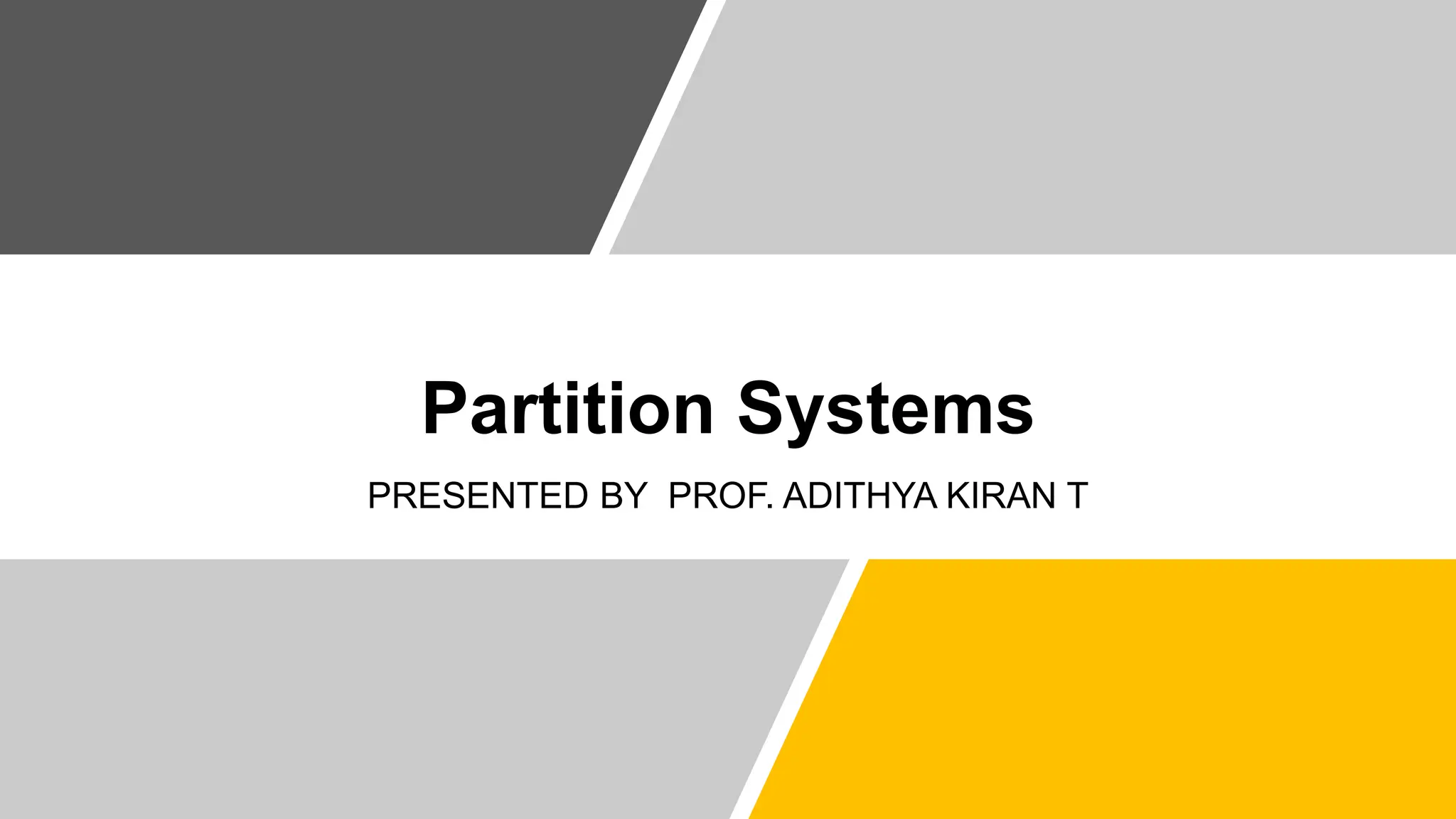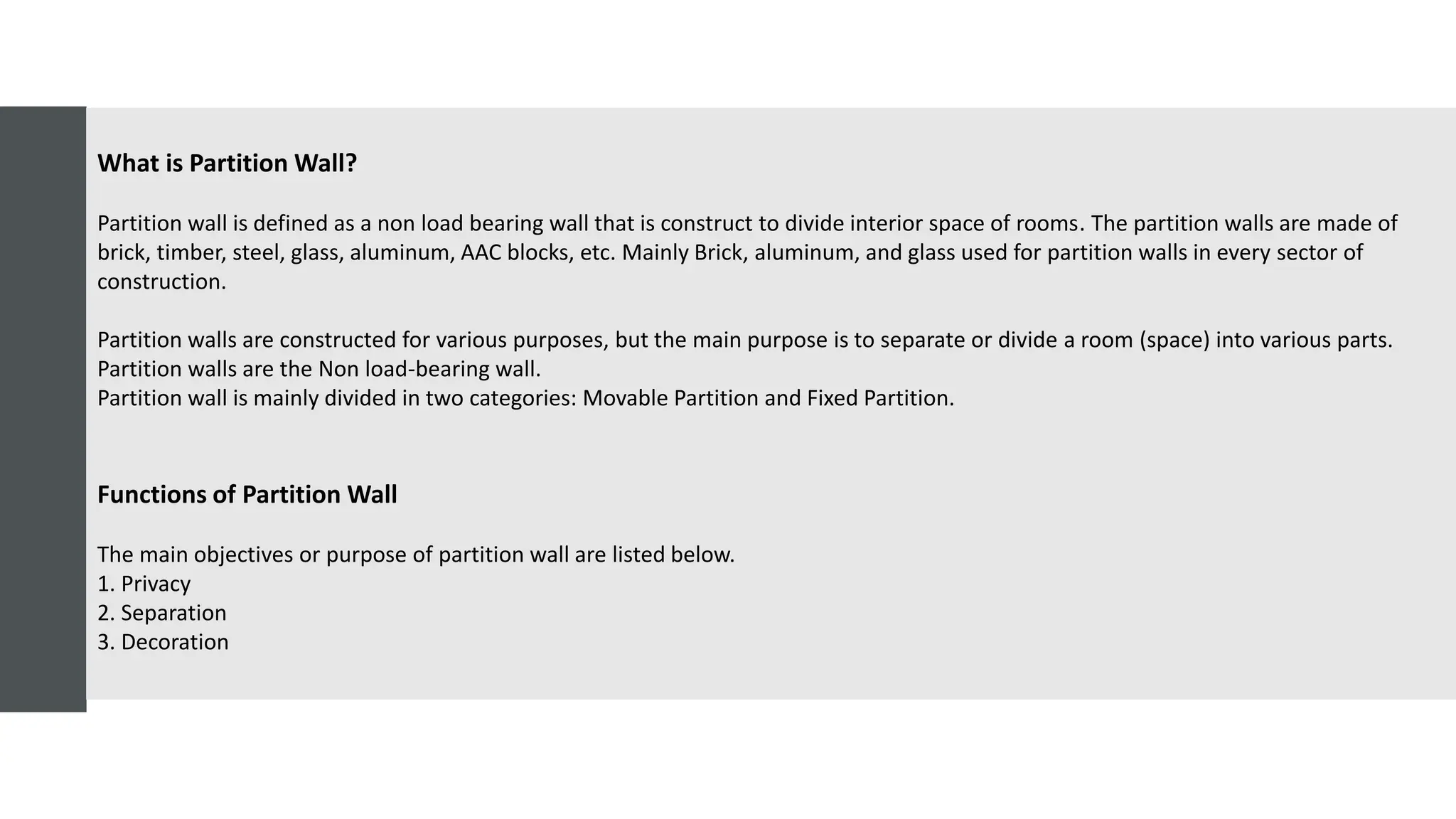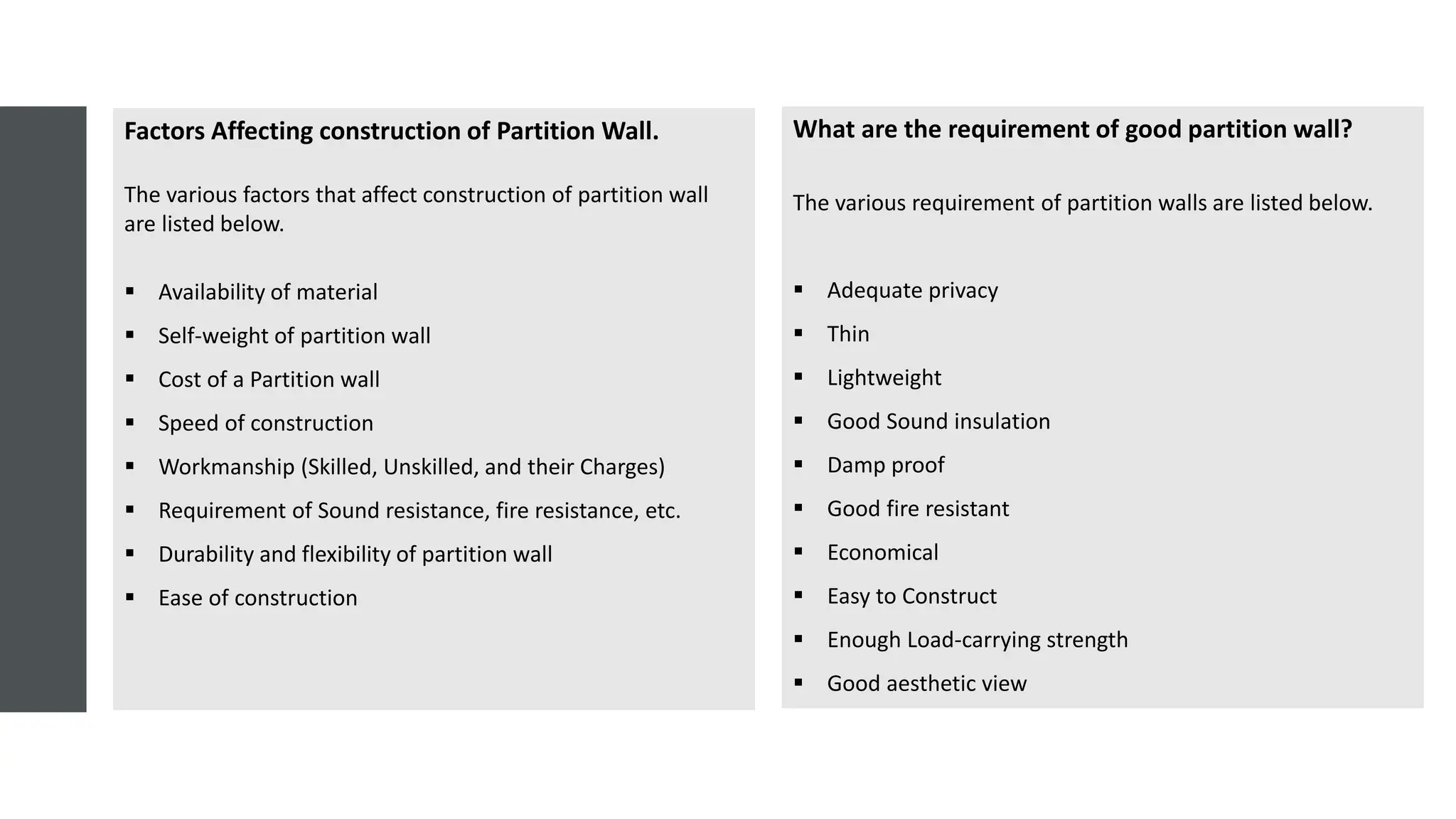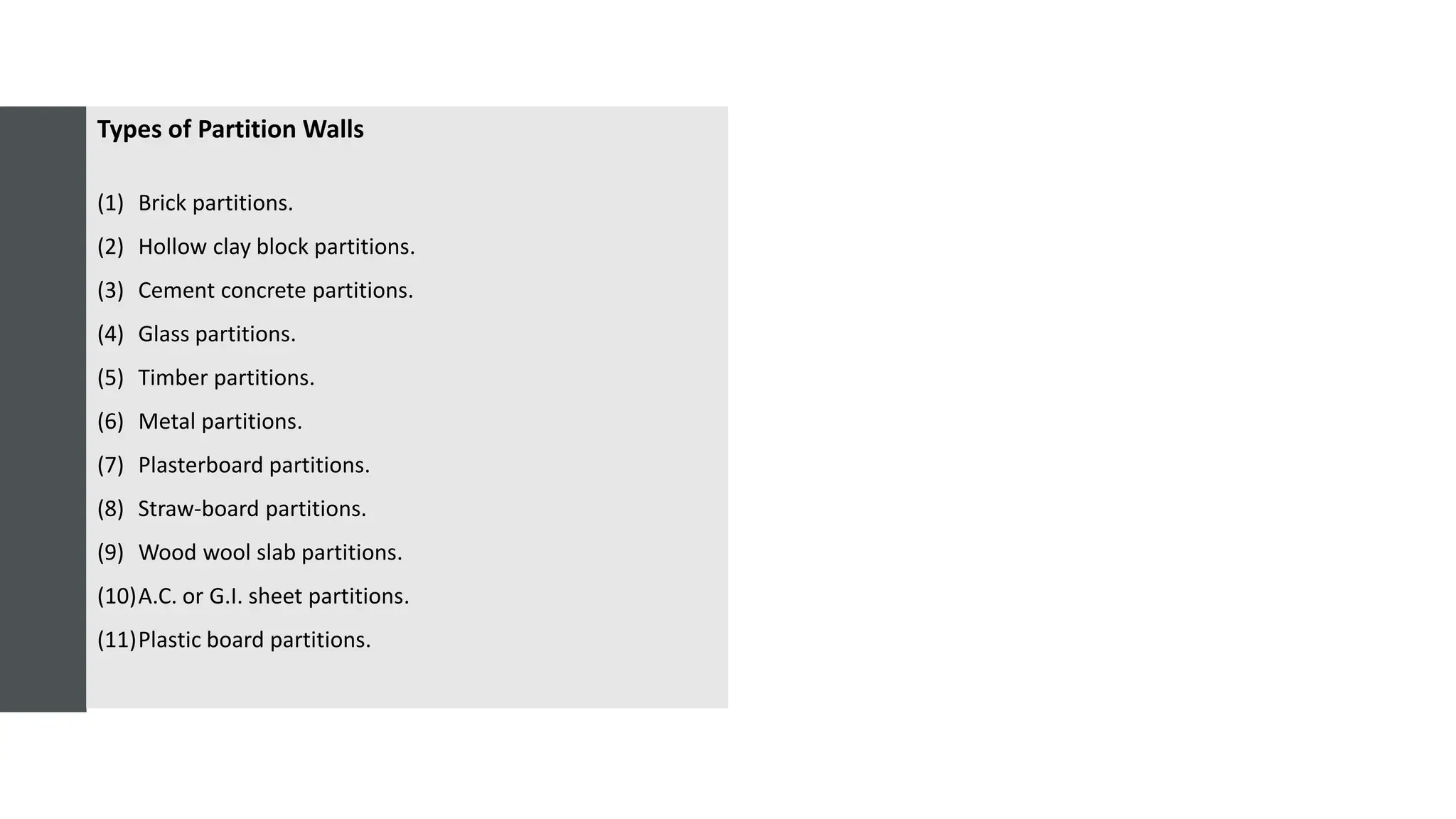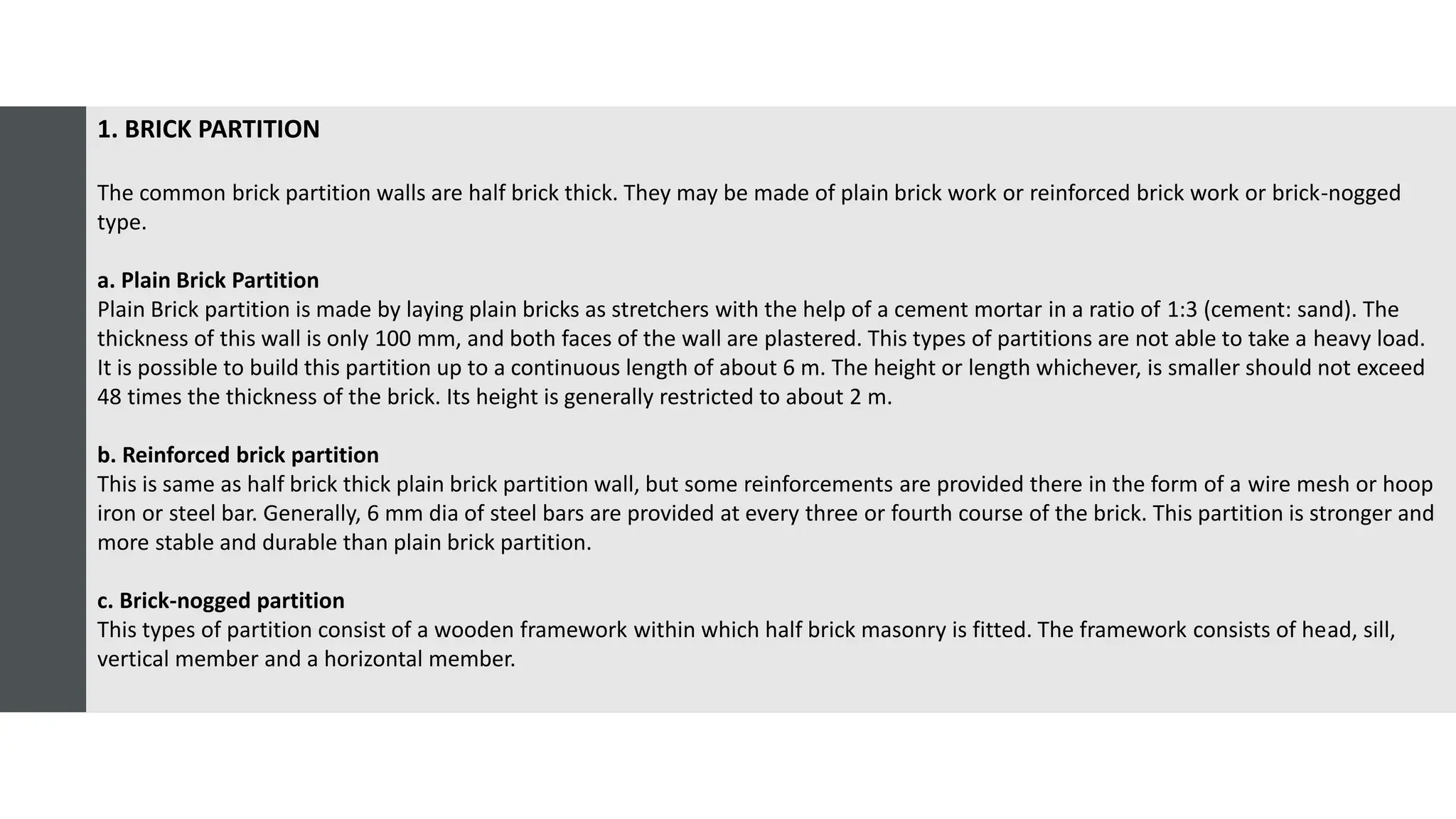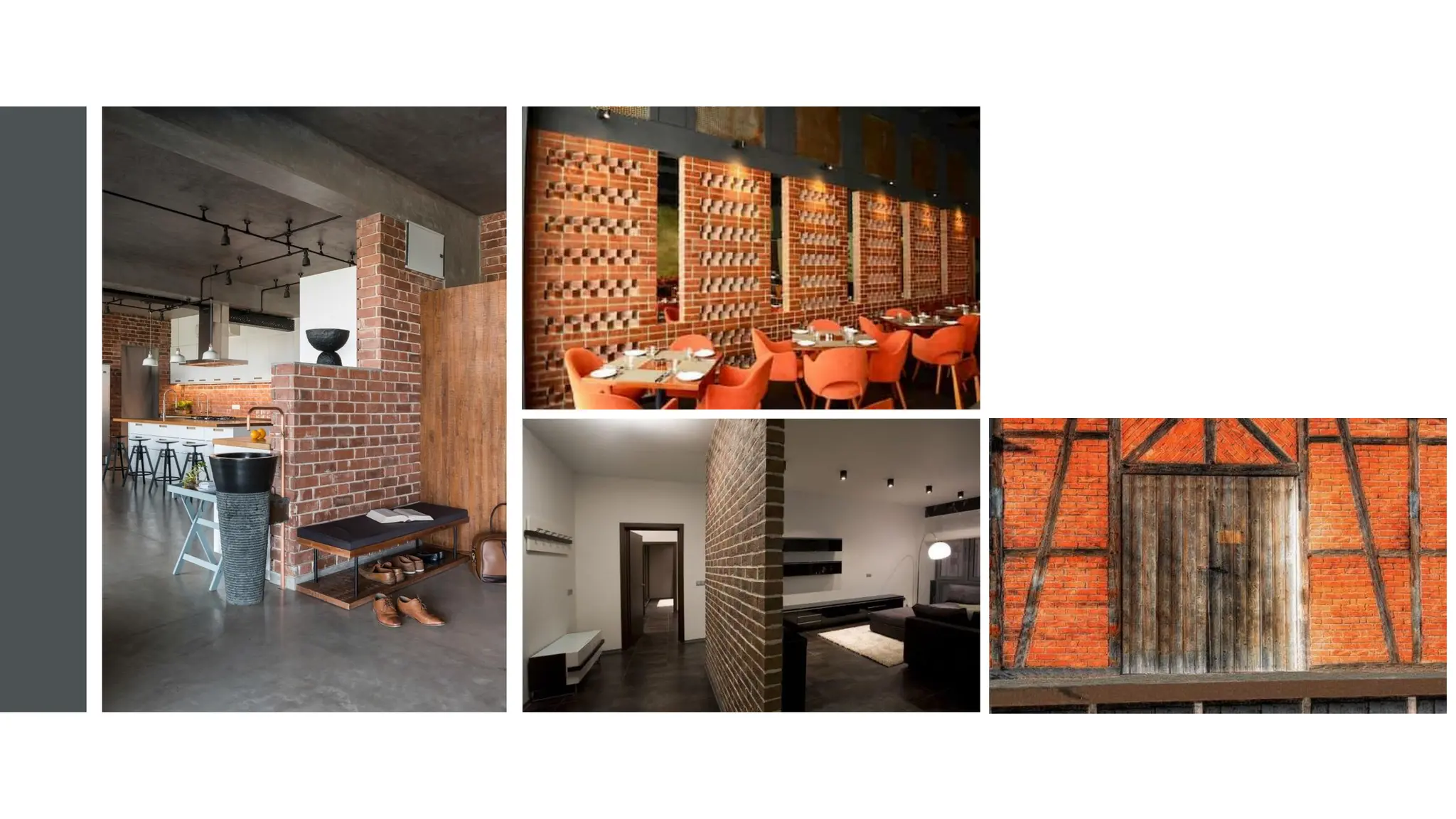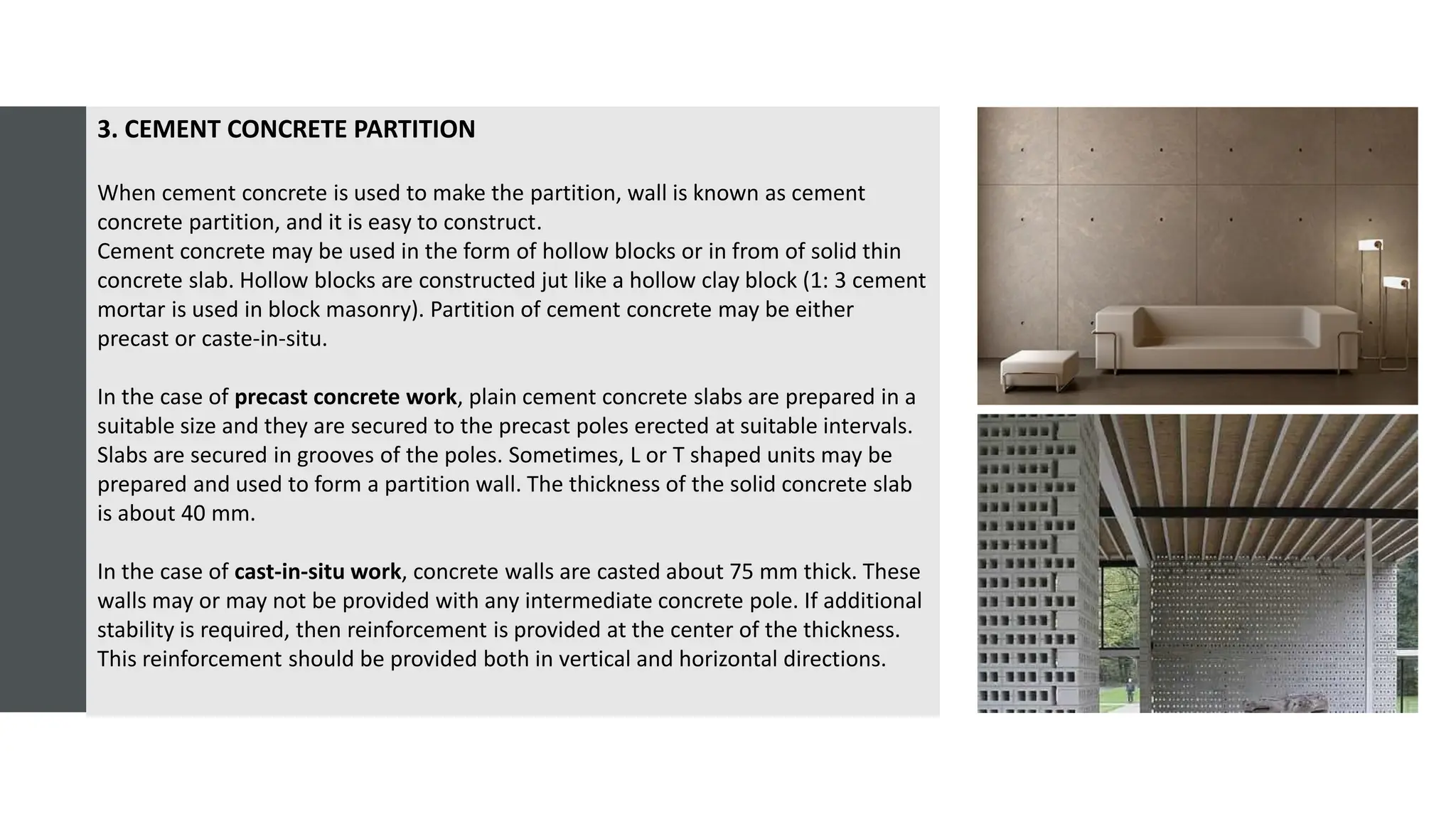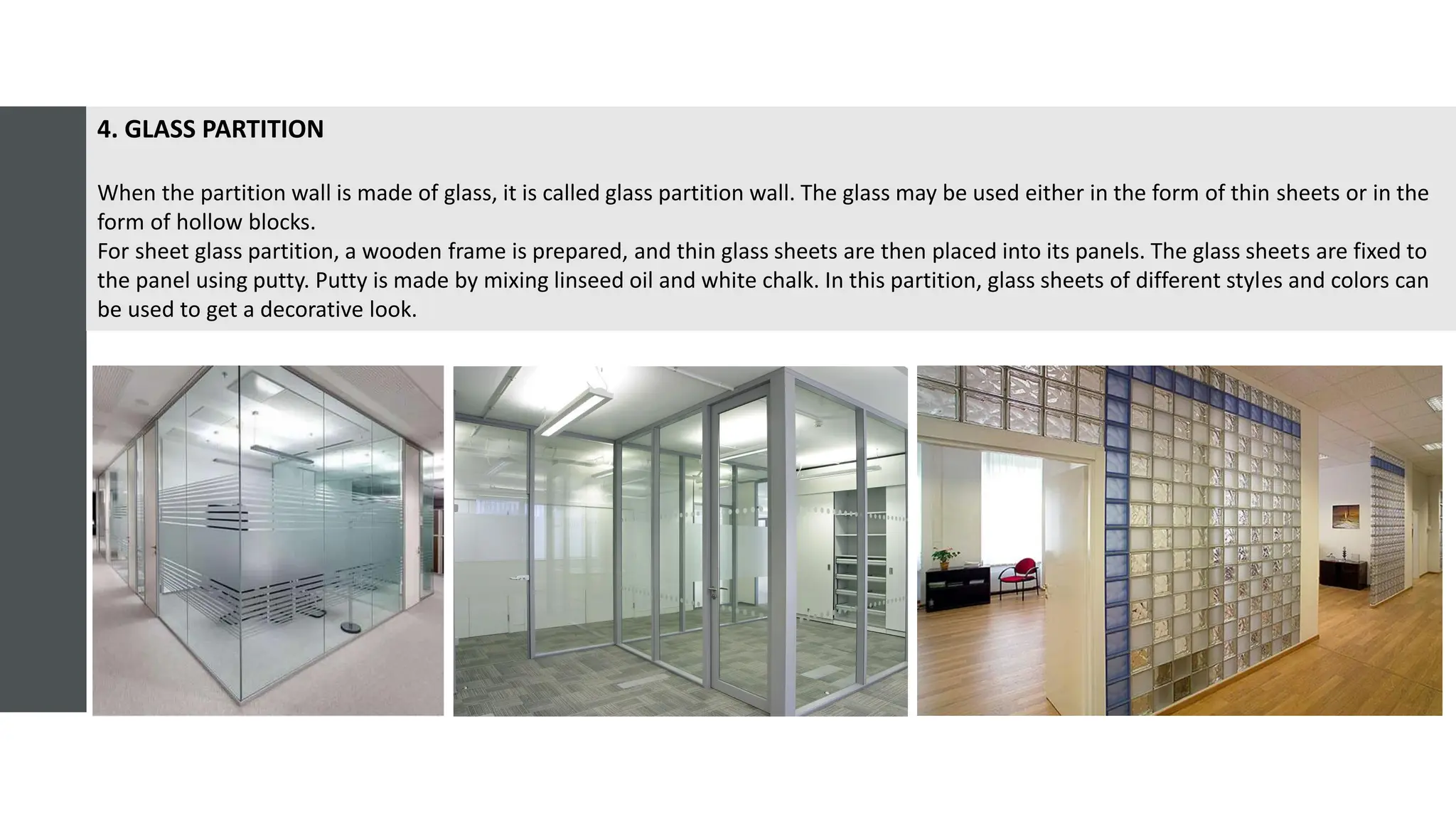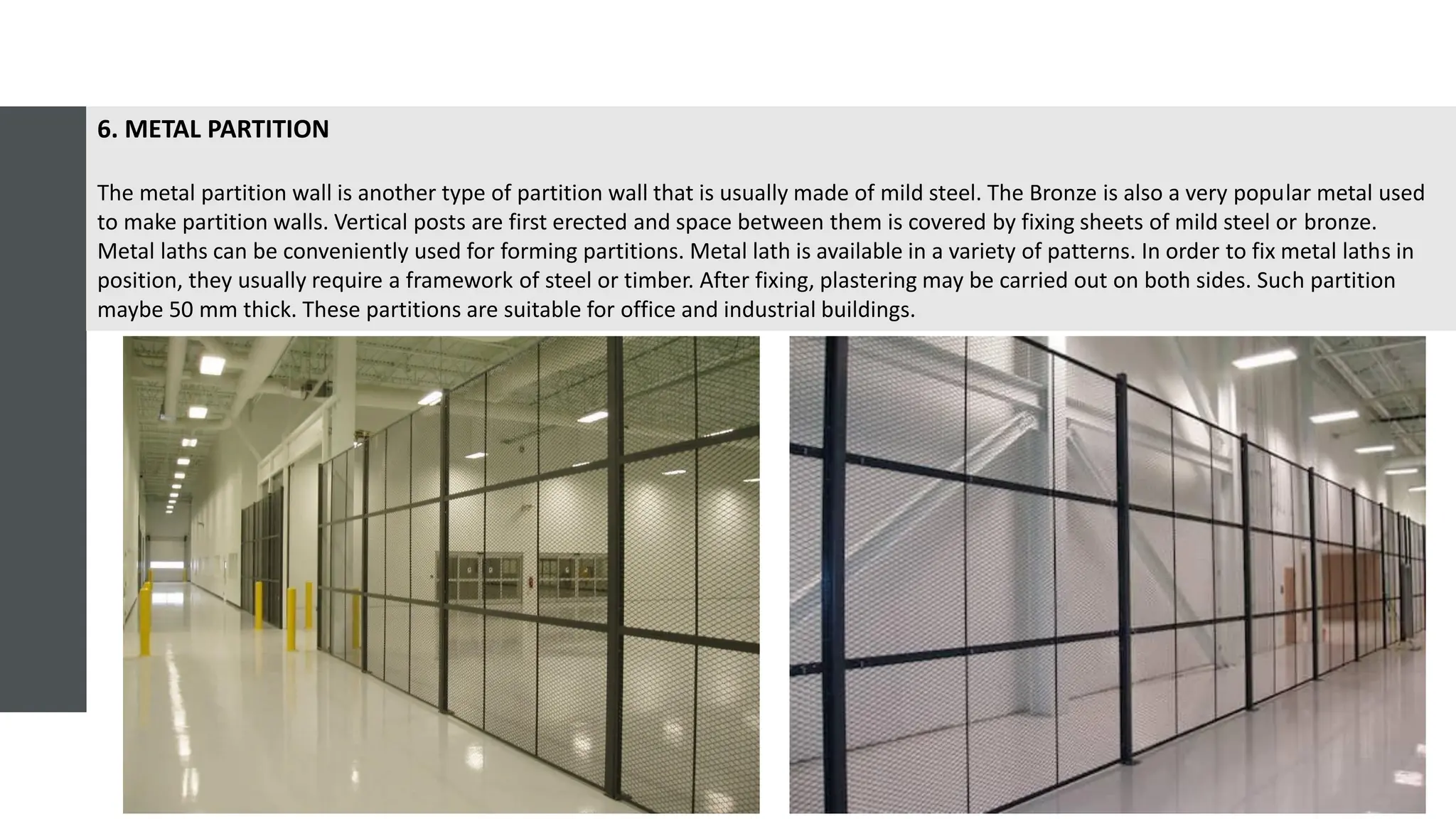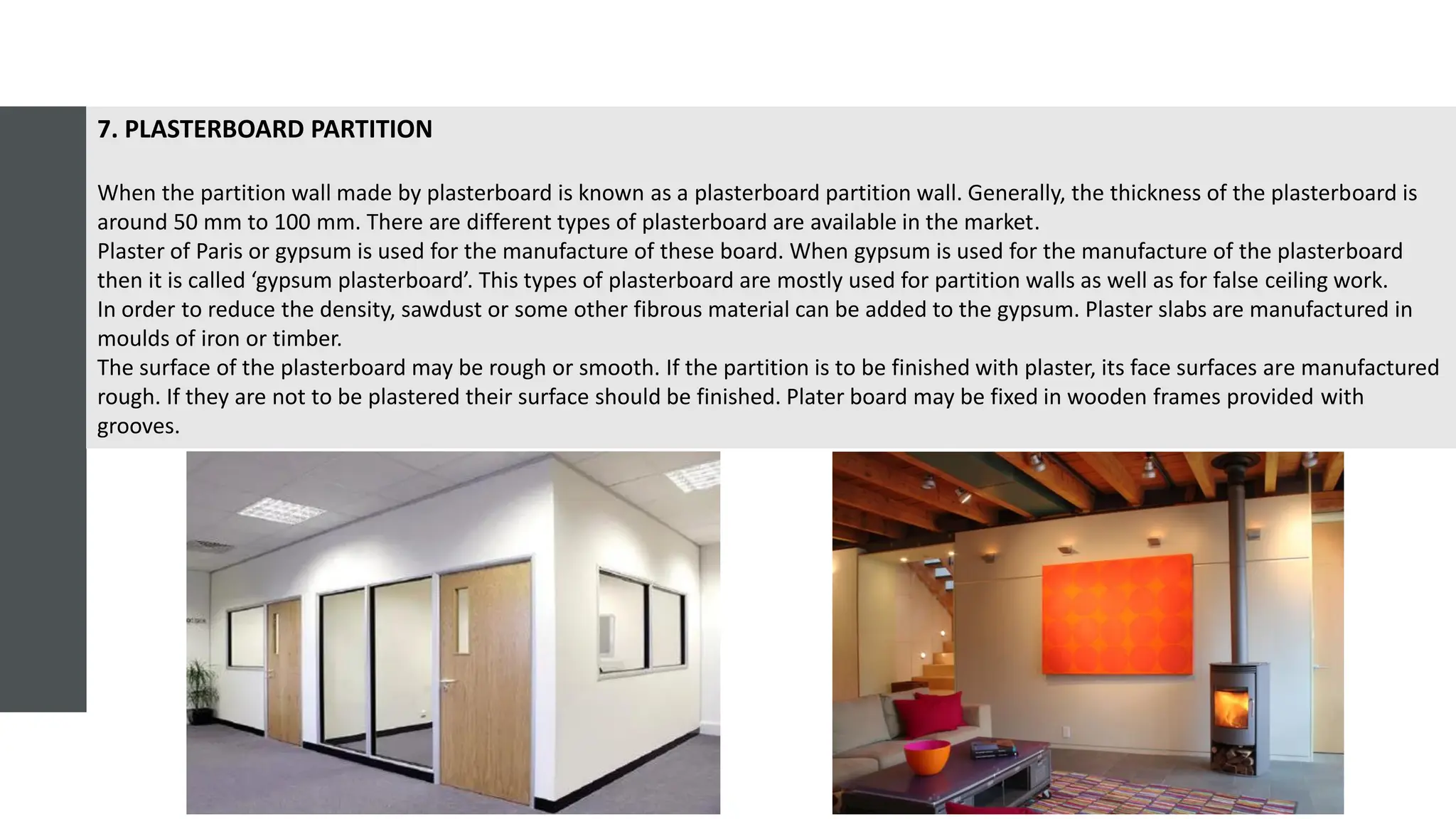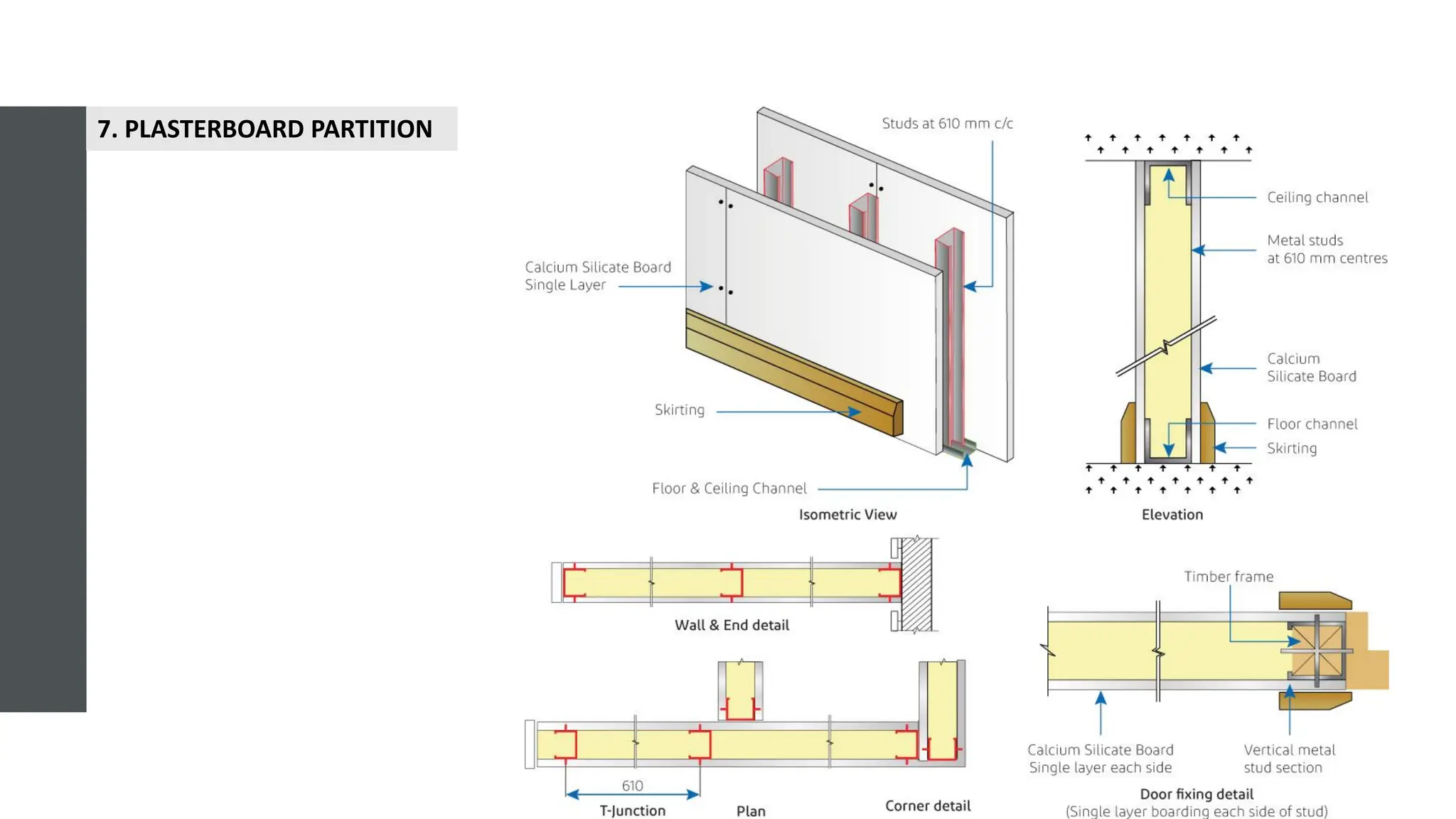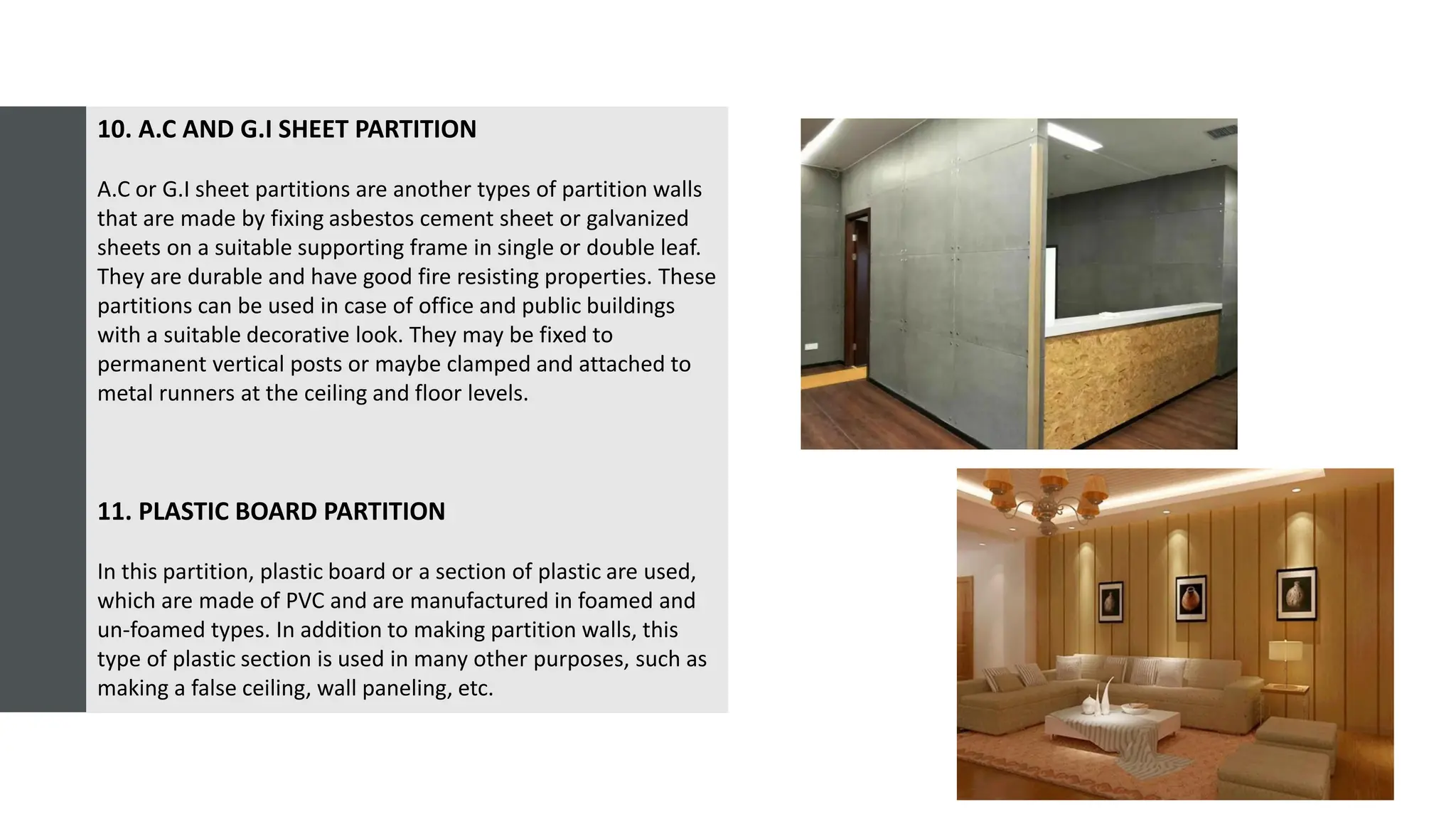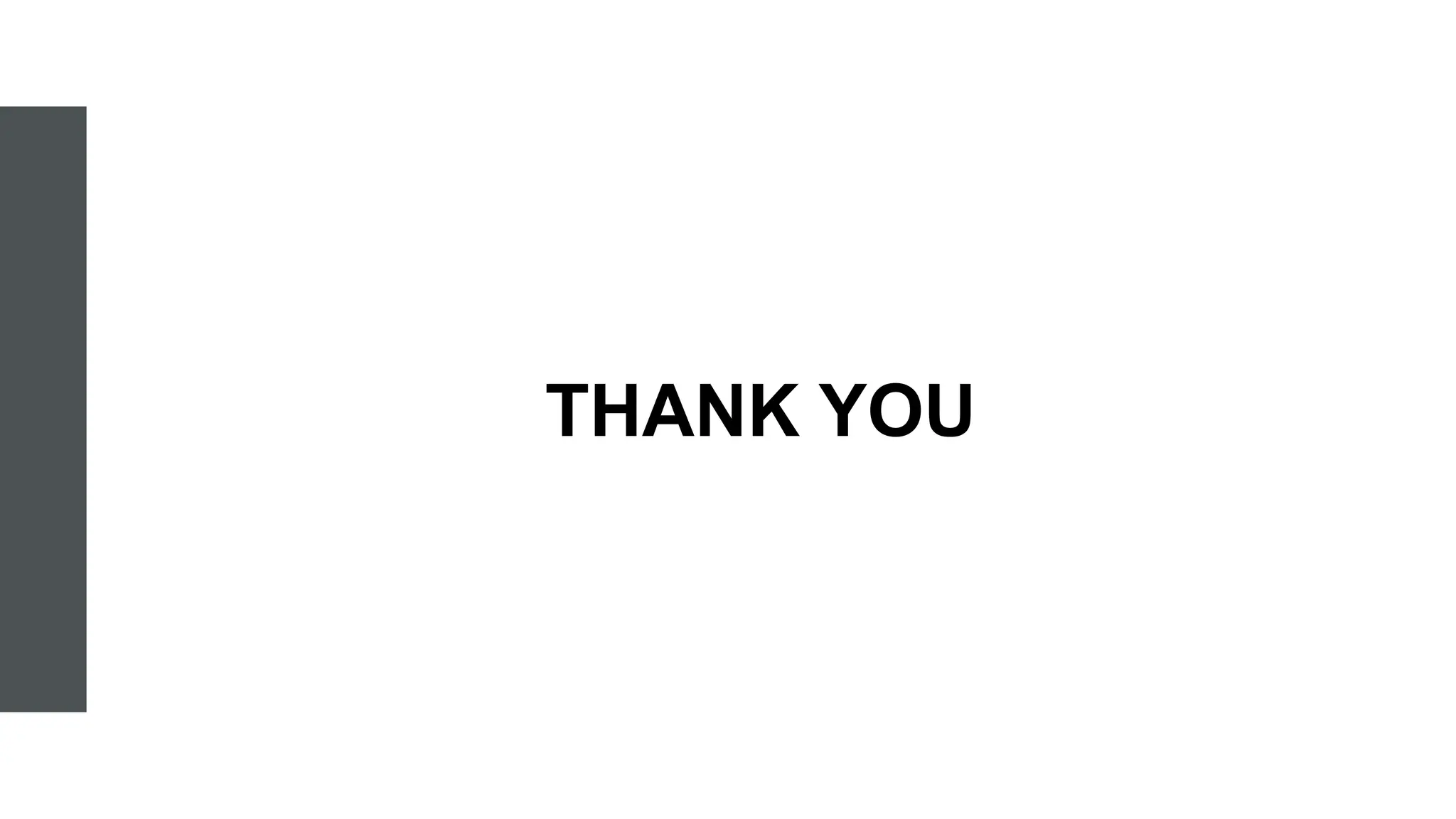Partition walls are non-load bearing walls used to divide interior spaces. They are constructed from various materials like brick, timber, steel, glass, and aluminum. Partition walls provide privacy, separation, and decoration. Factors that affect their construction include material availability, cost, load requirements, and ease of construction. Good partition walls are thin, lightweight, provide sound and fire insulation, and are economical and easy to construct. Common types of partition walls include brick, hollow clay block, cement concrete, glass, timber, metal, plasterboard, strawboard, wood wool slab, and plastic board partitions.
